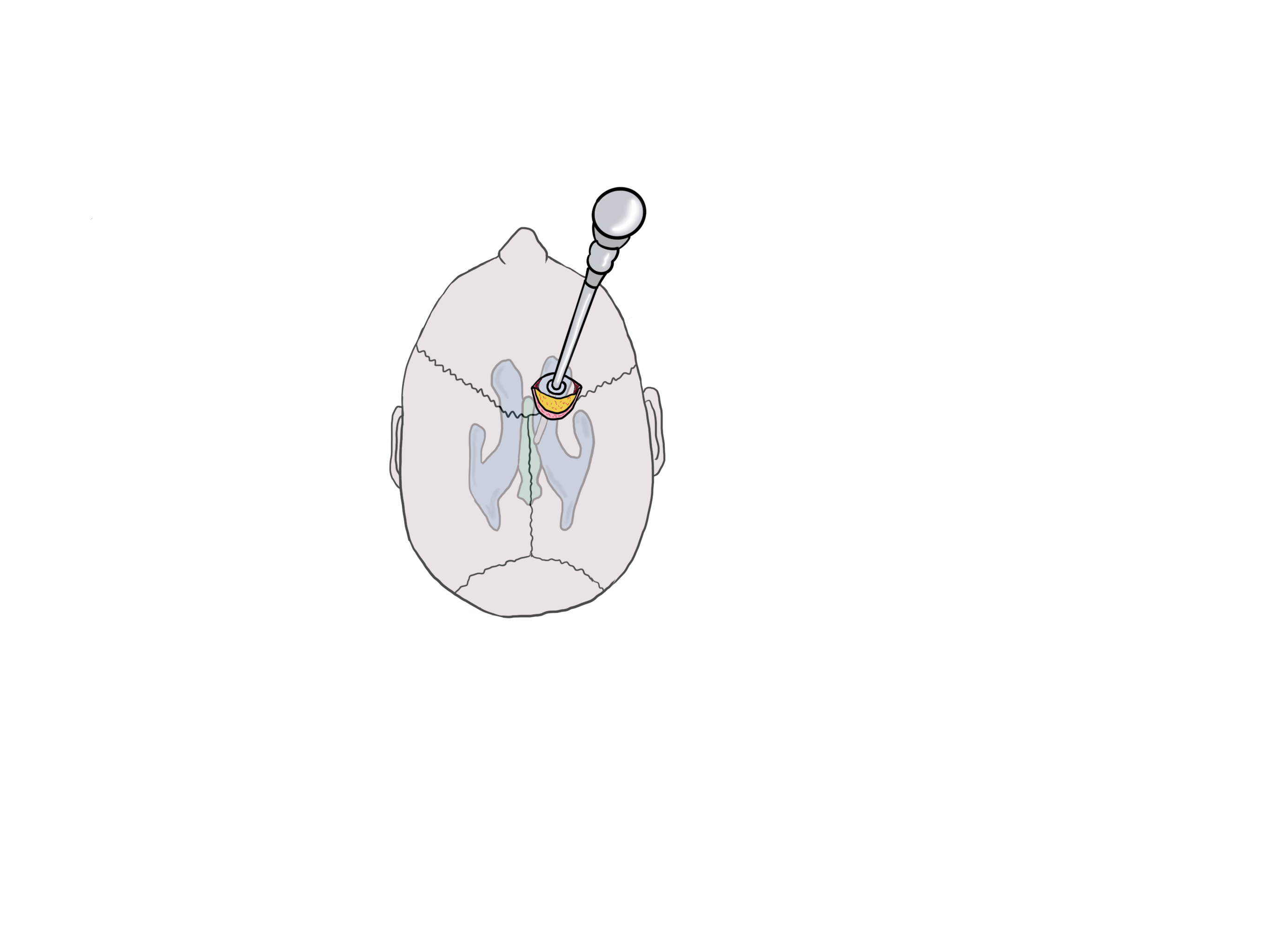Hydrocephalus
The hydrocephalus is a type of pathologies which include a problem of circulation of the cerebro-spinal fluid (CSF).
The CSF is a liquid which is around all the central nervous system: brain and spinal medulla and wich allows its chemical homeostasis. The CSF is producted by choroid plexus in the cerebral ventricles and absorbed in the general circulation on the convexity by pressure-valves.
Hydrocephalus could be classified in various methods but the simplest is to classify them depending on the mechanism of the pathology.

Hydrocephalus on a CT
The productive hydrocephalus is due to the increase in production of the CSF by choroid plexus. It is often secondary to a tumor of the plexus choroid which increases its CSF production. This pathology is rare and most often seen in pediatric age. The treatment is the tumor exeresis which often treated the hydrocephalus.
The obstructive hydrocephalus is secondary to the CSF circulation obstructive between its production location and its reabsorption location. It is also a pathology secondary to tumor with mass effect on a ventricle or malformation, or infection. This type of hydrocephalus is dangerous with the mass effect is complete, the treatment is in this situation an emergency. Other than the treatment of the etiology, the hydrocephalus could be treated by an external ventriculostomy or by a ventricular endoscopy.

Third ventriculostomy
The normal pressure hydrocephalus is the most frequent and is due to a disease of the pressure valves that normally allow the CSF to penetrate in the blood circulation. This pathology affects patients of more than 65-year-old. The clinical diagnosis could be difficult and could necessitate invasive exams as a lumbar puncture of CSF. The treatment is a ventriculoperitoneal shunt that consists in a little catheter between the cerebral ventricle and the peritoneal cavity.
